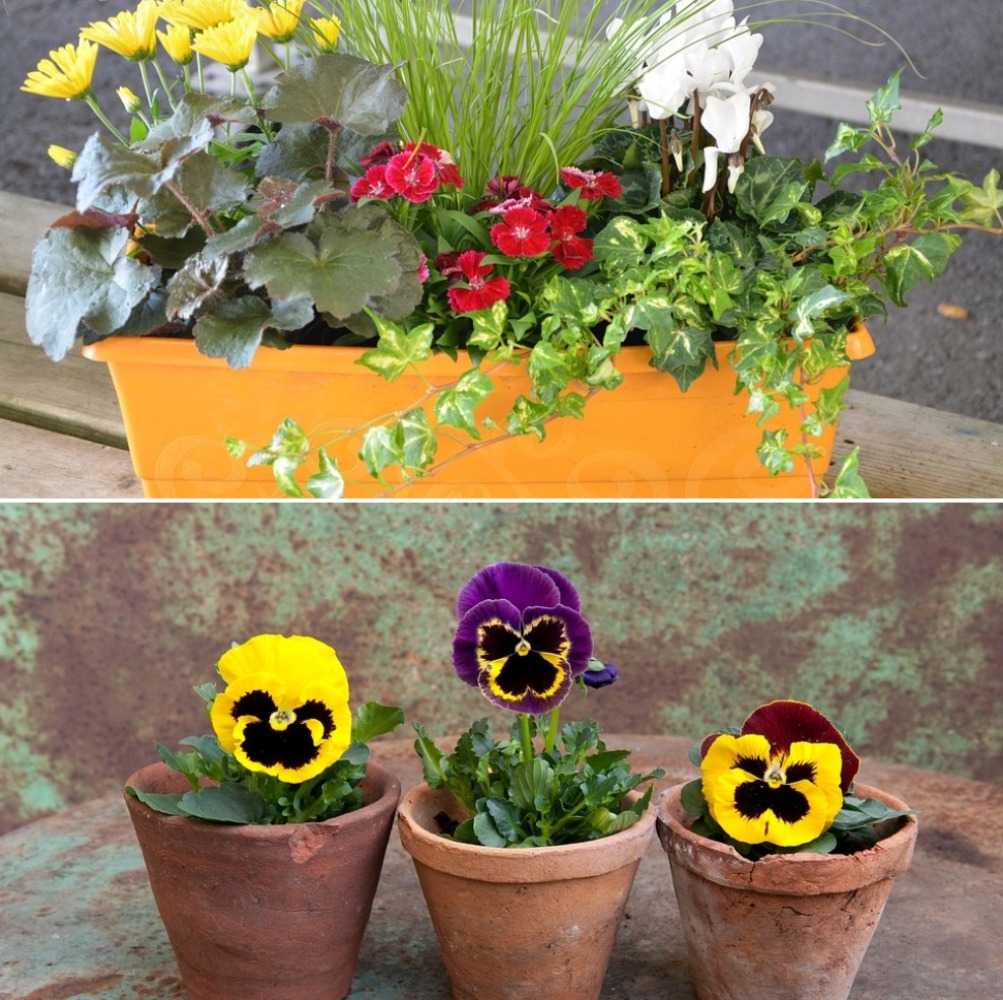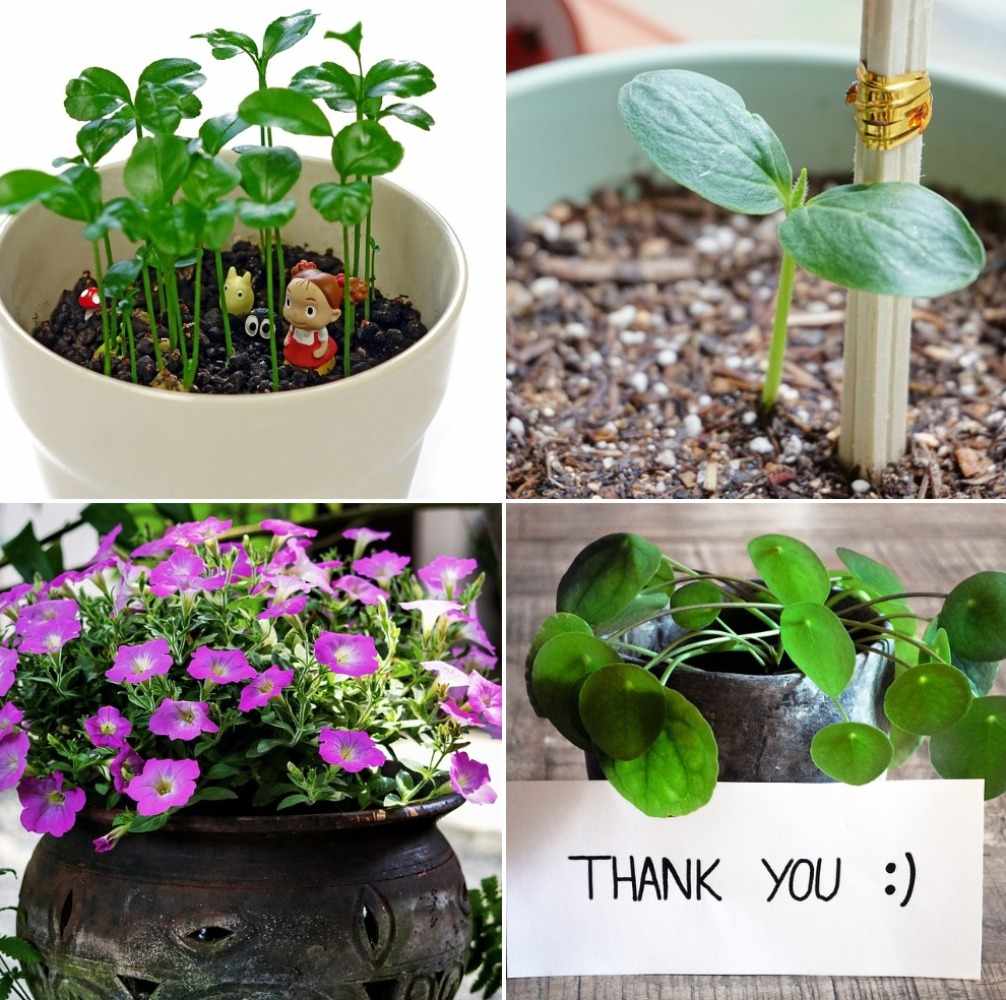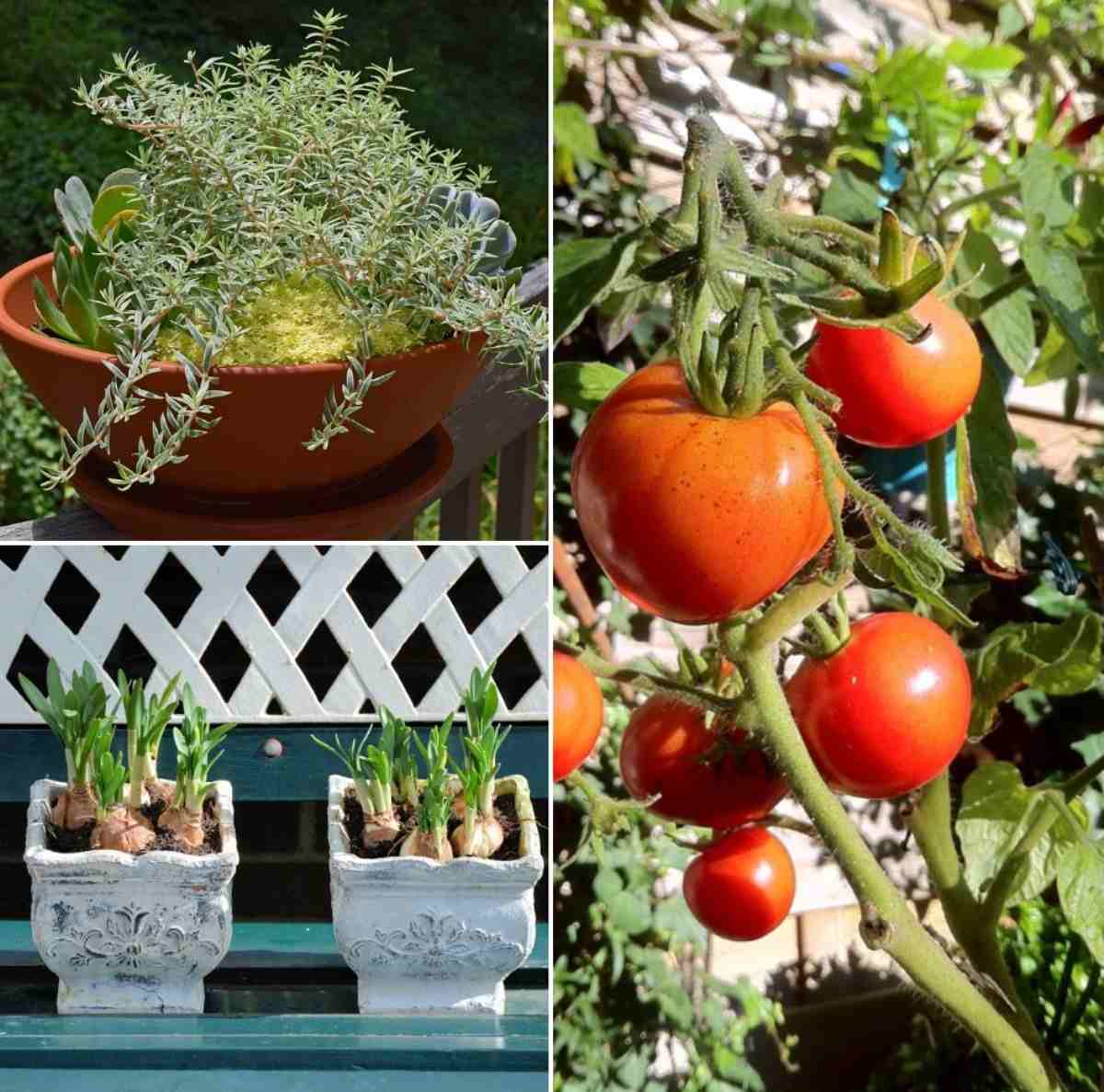Introduction: Container gardening is a great way to grow your own food in a small space, so it is perfect for apartments and gardens, as well as urban homes without a huge yard. Organic container gardening is an environmentally safe way to grow fruits, vegetables, and other plants. Container gardening allows you to be creative and personal in decorating your environment. A well‐planned container garden can be attractive (ornamentals) as well as useful vegetables, fruits, and herbs.
A step by step guide to oganic container gardening
Organic container gardening is the practice of growing plants organically in containers instead of planting them in the ground. Organic container gardening includes planting edible as well as non-edible plants. Containers will offer you the joy of growing several plants in an area where traditional gardening is impossible. Even with limited space, you can grow plants anywhere that is on a window sill, a doorstep, a balcony, a stair, and a patio, even a rooftop, in hanging baskets or in old buckets. They all can give enough space for an attractive and even productive (e.g. for vegetables) display. You can grow different plant species in one single container in ecological relationships. Organic container gardening makes observation easy and, whenever necessary, containers can easily be moved around.
Choosing a good container
Look for pots that work with the kinds of plants you want to grow.
Clay pots are very popular because they are a natural material and harmonize with most decors and foliage. While plastic pots are inexpensive and come in a range of colors.
The size of the containers you use will be mainly depending on the kind of plants you want to grow. If you want plants to grow healthy and provide an abundance of fruit then you have to make sure the container you plant them in is large enough.

You should not miss the Preparing Soil for Vegetable Garden.
The different kinds of pots we generally use for gardening;
- Unglazed terracotta or ceramics are very porous, so they let lots of air in to the roots and allow them to stay cool, but also require frequent watering and can’t take much frost or they can break or at least harm plant roots.
- Glazed terracotta or ceramics are similar, but hold more water and less air, so you may need a lighter soil mix, such as one with perlite. Some of them can take frost, while if they have soil in them, they can still crack.
- Plastic containers can get very hot, particularly dark ones. They don’t allow for airflow and they stay very wet, so you require a very porous mix that allows for airflow and drainage. Some of them are made with toxic chemicals and metal containers behave similarly to plastic. The plastic container is going to be the cheapest option and is the lightest to move around. My only issue with plastic containers is that they are viewed as disposable so if you choose to purchases them for garden make sure you use them year after year.
- Wooden containers, particularly raised bed containers are beautiful in gardens. These containers protecting plants from extreme temperatures. In summer, wooden planters warm up less than other container types, so the roots are protected from heat. In winter, wooden boxes protect all plants. However, you still require insulating to keep container plants warm. Drilling holes for drainage in the wood container is easy compared to pottery or iron.
- Generally, cement planters are expensive but incredibly durable. They are heavy though, especially once dirt has been added into them so these are better to select for more permanent containers that you don’t plan to move around.
Select the right soil for your organic container gardening
- For container gardening, soilless mixtures are inexpensive, lightweight, and free from disease and contaminate. They help the plants retain water, and also make little air pockets that help the roots breathe. You must also mix in about 1/3 to 1/2 compost to feed your plants slowly from the roots.
- The simplest approach is to mix equal parts of garden soil and good-quality compost (sifted through a 1/2-inch wire mesh screen to remove any lumps). If the soil mixture stays too wet, add a coarse material such as sand or perlite to your recipe; if it dries out too quickly, use more compost or peat moss the next time. This sort of mix tends to be heavy, which can be a problem if you want your containers to be easy to move. For a lighter, soil-less mix; begin with equal parts compost or peat moss and perlite.
- Carefully choose or make an organic potting soil for container gardening. Potting soil allows for good drainage while allowing air into the soil. Choose soil with no added nutrients or fertilizer this allows you to customize soil mixes for each plant’s specific needs with specific plant food that meets your garden requirements.
Pick the perfect plants for container gardening
Selecting plants native to your region or bred specifically for your climate helps create a healthy, low maintenance organic garden, which is very important if you’re new to organic gardening. All of the Bonnie Organics varieties you will find at your local garden shop or home improvement store have been chosen because they grow well in your area.
Lettuce and herbs do well in shallow containers with large surface areas. Select containers that allow about four inches of soil. If you plant two pots, you can snip what you need off one container, and then harvest the second while the first recovers and keep the soil moist.
Some people use deep buckets filled with a mix of potting soil and compost. Unlike lettuce, which wants continuously moist soil, let tomato containers dry between watering.
Apply organic fertilizer for container gardening
Your potting soil isn’t going to cut it when it comes to feeding your plants, you want fertilizer to make sure that all season long they are fed and are able to grow healthy. While there are plenty of conventional fertilizers that one of the best parts of growing your own food is the control you have over what chemicals your food is exposed to.
There are several types of fertilizer but typically it is good to use a slow-release fertilizer and mix it according to the fertilizer package directions into your potting soil. Then every 2 weeks add liquid fertilizer to help keep your plants fed and growing strong all season long.
Give your plants the right conditions to grow
Plants require the right amount of sunlight and water. Be careful when putting plants on balcony boxes, because the wind may dry them out more quickly. On the other hand, most people make the mistake of overwatering plants.
When filling a container, leave at least a 5 cm (2 inch) space between the top of the garden soil and the top of the container for adding some mulch (about four‐fifths full). Make it 10 cm (4 inches) for plants that require a lot of watering. When watering the container, the growing medium or substrate will settle.
You may also like the Small Space Vegetable Gardening in India.
Proper watering and drainage
Container gardens need to be watered frequently, particularly during the hot summer months. Because they are above ground the containers can have a hard time holding moisture and it is very important to make sure that soil remains damp.
Too much water can be just as bad for your plants as not enough, so always verify the soil before watering. Stick your finger 1 inch down into the soil. If the soil feels moist, leave it alone, but if soil dry, it’s time to water. Be sure to water the soil surrounding the base of the plants so the roots absorb the moisture and not only is watering the leaves wasteful, but it can also create an environment that invites disease. A drip irrigation system, a highly targeted watering method, is a good choice for organic gardens.
Maintain with mulch
A thick layer of organic mulch not only helps control weeds by blocking the sun they require to grow but also helps retain moisture in the soil so you may need to waterless. Mulch also creates the look of a tidy, pretty garden. While pine straw and wheat straw are popular mulch choices, untreated grass clippings, chopped leaves, and even aged wood shavings are also good choices.
Planting

Buy organic seeds from a trustworthy provider, or from garden store to obtain organic seedlings or “starts.” When planting seeds, make sure the soil is fully damp, and then follow the same directions on each seed packet. For gardening starts, gently remove the plant from its container, keeping as much of the soil as possible. Dig a hole in the container, and gently place the start so its roots are completely covered but its leaves are exposed and do not leave too much of the stem exposed. Keep organic seeds and starts moist, and do not let the soil dry out until they are healthy and have more than two leaves.
Rotate Crops in organic container gardening
One of the best ways to protect your organic garden is to use a time-tested method called “crop rotation,” which simply means moving plant types to different locations each year. When members of the same crop family for example tomatoes, peppers, and eggplants, all members of the nightshade family are always planted in the same place year after year, pests and diseases that attack that particular kind of plant can build up and overwinter in the soil. Then they are ready to attack the next time that plant is planted. By mixing up garden plans and moving plants to different beds or areas in the garden, you’ll avoid pests and diseases that may lurk in the soil.
Feed your plants
Feed your gardening plants and they will feed you. Plants use nutrients from the soil as they grow, so replenishing nutrients used ensures they will produce to their full potential. Top your pots up with Organic Compost in between plantings to replenish nutrients. Sheep pellets, blood and bone meal, and seaweed-based fertilizers are all-natural options you can use.
It is best to water deeply in a container a few times a week rather than a little each day, as this will encourage deep roots. Watering the plants in the morning or evening rather than the heat of the day to avoid water evaporation. Well watered, well-nourished container plants will have a better chance of keeping insect pests and diseases at bay.
Diseases and Insects for Organic container gardening
Plants grown in containers can be attacked by several types of insects and infected with diseases that are common to any other type of garden. Plants must be periodically inspected for the presence of foliage and fruit‐feeding insects, as well as for the occurrence of diseases. Containers can be arranged in the garden so that plants can attract and repel insects or flies. Some container plants emit special chemicals from their roots or leaves, which repel pests.
The weather, weeds, pest insects and diseases can all impact on the success of your container gardening plants. Keep your organic garden weed-free. Be vigilant and stop unwanted insects and diseases from ruining your plants and companion planting is a great natural way to deter pests.
You can also consider the Garden Plants in India.
There are several organic pest control methods available including chemicals, minerals, and strategic gardening techniques.
Spinosad
This option can safely be used on fruit and vegetable crops. Spinosad is a soil-based bacterium that kills garden pests such as bagworms, borers, beetles, spider mites, tent caterpillars, and loopers.
Rotenone
An organic pest killer that is moderately toxic to most mammals and occurs naturally in seeds and stems of plants. Use this with caution near ponds or lakes, as rotenone is extremely toxic to fish. It will kill leaf-feeding caterpillars, beetles, aphids, and thrips on all crops.
Neem oil
Neem oil is extracted from a common Asian tree and inhibits the growth cycle of insects. Its active ingredient, azadirachtin, will cause infected insects to eat less, produce more slowly, and molt less. This is a good choice for those who don’t yet have major pest infestations and want to get a head start on reducing the number of potential pests.
Diatomaceous earth
This powder is essentially composed of fossilized diatoms, which are part of the algae group. Diatoms have a hard skeleton; when the powder comes in contact with insects, sharp edges will cut their bodies and cause them to die of dehydration within 2 weeks of application. The particles are so small, however, that they will not cut people or pets.
Care for an organic container gardening
Care for organic container garden as you would a normal garden bed. If your plants seem crowded, thin them; pull several weeds that pop up. Water only when the soil is dry to a depth of one inch, and then water deeply. Your bucket must not get soggy; if it does, make larger drainage holes. If you see fungus or mold, stop watering and consider replanting veggies. Make sure plants are getting enough light but not too much. Maintain container garden to have organic food throughout the growing season.
Advantages to organic container gardening

- Organic food tastes great and well-balanced soils produce strong healthy plants that become nourishing food for people.
- Save money having its own organic container garden.
- Container gardens allow you to grow on a balcony, home garden, patio, and courtyard, indoors on windowsills or rooms with adequate light, the deck of a boat, rooftop or caravan annexe.
- Container gardening makes it easier to save seeds used to generate future plants or share with other gardening enthusiasts.
- Easier to protect plants from extreme weather conditions, insect pests, diseases, and bigger critters.
- Organic gardening provides for intense, realistic flavors in your food, as well as higher vitamin content and mineral content. Increased soil organic matter reduces erosion, conserves water to provide drought resistance, and feeds plants in time commensurate with their needs.
You may be interested in Shrimp RAS Farming in India.